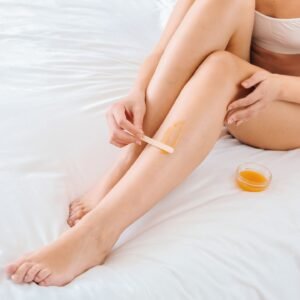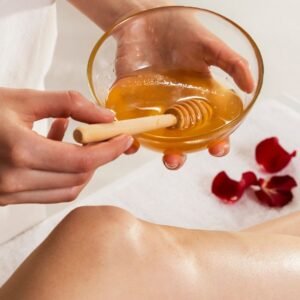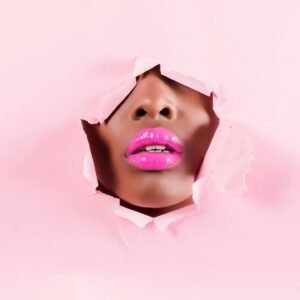Sugaring for Coarse Hair: Does It Really Work?

Anyone with thick, stubborn hair knows the struggle of finding a hair removal method that is both effective and gentle. Coarse hair is notoriously difficult to remove because its density and thickness require more robust removal methods. Waxing often causes pain and skin irritation, while shaving can lead to uncomfortable stubble and ingrown hairs. Among alternative solutions gaining popularity is sugaring. But does sugaring for coarse hair really work?
Table of Contents
- Challenges of Removing Thick, Coarse Hair
- Why Sugaring is Effective for Strong, Stubborn Hair
- Pre-sugaring Preparation Steps for Coarse Hair Types
- Recommended Frequency of Sessions for Optimal Results
- Expert Tips for Dealing with Coarse Hair Successfully
- Frequently Asked Questions
- Can sugaring really remove coarse hair effectively?
- Will my coarse hair grow back thicker after sugaring?
- How should I prepare for a sugaring session if I have coarse hair?
- How often should I get sugared if I have thick or stubborn hair?
- What should I do after sugaring to avoid irritation?
Challenges of Removing Thick, Coarse Hair
Coarse hair removal presents unique challenges due to its thicker follicle and deeper root structure. Traditional waxing can be particularly painful as wax adheres strongly to the skin, often causing irritation and inflammation. Additionally, shaving doesn’t always yield smooth results; regrowth tends to occur quickly, with hair returning thicker and sharper. For many, this creates a cycle of discomfort and frustration, highlighting the need for a more effective and less irritating solution.
Why Sugaring is Effective for Strong, Stubborn Hair
Sugaring for coarse hair is highly effective because it addresses many issues commonly associated with traditional hair removal methods. The sugaring paste, a simple combination of sugar, lemon juice, and water, adheres primarily to hair rather than the skin. This means fewer skin irritations and less pain. Because the paste removes hair in the natural direction of hair growth, it significantly reduces the risk of breakage, ingrown hairs, and follicle damage.
Additionally, sugaring regularly can weaken coarse hair over time. Each session progressively damages the follicle, causing hair to grow back thinner and finer. Unlike shaving or depilatory creams, sugaring offers long-lasting smoothness by uprooting hair completely rather than merely cutting or dissolving it.
Pre-sugaring Preparation Steps for Coarse Hair Types
Proper preparation significantly enhances the effectiveness of sugaring for coarse hair. Begin by gently exfoliating the area one or two days before your appointment. Exfoliation removes dead skin cells and helps release any trapped hairs, ensuring the sugaring paste adheres better to individual hairs.
Avoid moisturizing or applying oils on the day of sugaring since these products can create a barrier, reducing the paste’s effectiveness. Hair length is also critical—ideally, hair should be about ¼ inch long. If it’s too short, the paste won’t grip effectively; too long, and removal becomes unnecessarily painful. Trimming hair beforehand can ensure optimal results.
And remember about the post sugaring care lotions:
Recommended Frequency of Sessions for Optimal Results
Consistency is key when it comes to sugaring for coarse hair. Professionals typically recommend scheduling sugaring sessions every four to six weeks. Regular appointments help maintain smoother results by keeping hair growth cycles synchronized. Over time, repeated sugaring sessions lead to finer hair regrowth, easier removal, and longer intervals between treatments.
Expert Tips for Dealing with Coarse Hair Successfully
Experts suggest several tips for managing coarse hair successfully with sugaring. First, ensure you stay hydrated and maintain a balanced diet to improve skin elasticity and reduce sensitivity. Hydrated skin facilitates smoother hair removal.
Secondly, using soothing products after each sugaring session, such as aloe vera gel or mild moisturizers, can alleviate any minor irritation and redness. Avoid harsh chemical exfoliants or scented lotions for at least 24 hours post-treatment.
Lastly, trust a trained professional for your sugaring treatments. Their expertise in handling coarse hair types can make a substantial difference in achieving excellent results. They know precisely how to apply and remove the paste efficiently, ensuring minimal discomfort and maximum effectiveness.
In conclusion, sugaring for coarse hair truly does work effectively when executed correctly. By following proper preparation, maintaining consistent treatments, and incorporating expert advice, individuals with stubborn hair can finally achieve smooth, irritation-free skin with this gentle and natural hair removal method.
Frequently Asked Questions
Can sugaring really remove coarse hair effectively?
Yes, sugaring is highly effective for coarse hair. Unlike waxing, which sticks to the skin and can cause irritation, sugaring paste adheres primarily to the hair. It removes hair in the natural direction of growth, minimizing breakage, reducing ingrown hairs, and leading to long-lasting smoothness.
Will my coarse hair grow back thicker after sugaring?
No, sugaring often leads to thinner and finer regrowth over time. With regular sessions, the hair follicles weaken, which can reduce hair density and make each treatment easier and less painful.
How should I prepare for a sugaring session if I have coarse hair?
Prepare by gently exfoliating the area 1–2 days before your session to remove dead skin and free trapped hairs. On the day of sugaring, avoid lotions or oils, and ensure hair is about ¼ inch long for the best results. Trimming is advised if your hair is too long.
How often should I get sugared if I have thick or stubborn hair?
Professionals recommend sugaring every 4–6 weeks. Consistent treatments keep your hair growth cycle in sync and progressively reduce hair thickness, making each session smoother and more effective.
What should I do after sugaring to avoid irritation?
After sugaring, apply soothing products like aloe vera or post-sugaring lotions. Avoid chemical exfoliants, hot showers, and scented lotions for at least 24 hours. Keeping your skin hydrated also helps maintain smooth, irritation-free results.










